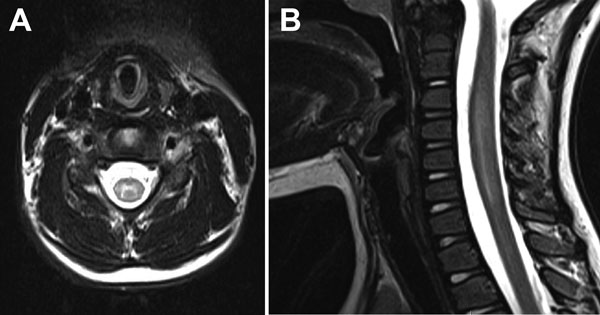Volume 21, Number 10—October 2015
Dispatch
Acute Flaccid Paralysis Associated with Novel Enterovirus C105
Figure

Figure. Magnetic resonance imaging of 6-year-old girl with flaccid paralysis and enterovirus C106 infection, Virginia, USA, October 2014. A) Axial T2-weighted image of the cervical spine demonstrating abnormal hyperintensity of the central gray matter (right to left). B) Sagittal T2-weighted image of the cervical spinal cord demonstrating faint longitudinally extensive central hyperintensity and associated cord edema.
Page created: September 22, 2015
Page updated: September 22, 2015
Page reviewed: September 22, 2015
The conclusions, findings, and opinions expressed by authors contributing to this journal do not necessarily reflect the official position of the U.S. Department of Health and Human Services, the Public Health Service, the Centers for Disease Control and Prevention, or the authors' affiliated institutions. Use of trade names is for identification only and does not imply endorsement by any of the groups named above.